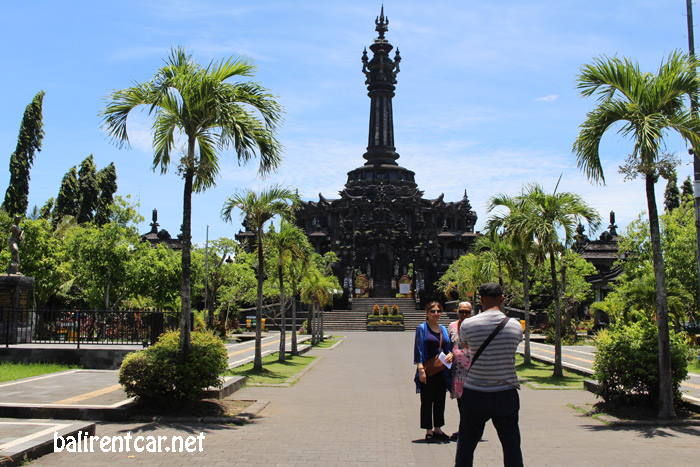Bali Needs to Protect Its Architectural Treasure
March 15, 2008According to the Asta Kosala Kosali manuscripts, all architectural structures, as microcosmic units, should reproduce the tripartite order of both the world and the human body. Every building and compound thus has a head, a body, and a lower body (genitalia, bowels, and legs), corresponding to the gods, humans, and demons.
In the traditional walled compounds of the family temple is the head of the building while its body consists of the living quarters and the kitchen and lavatory are its bowels and genitalia. Most of these buildings are open pavilion ones, and they are all oriented in a spatial hierarchy that duplicates the order of the world: the small thatched shrines.

But Bali is no longer an agrarian society. Tourism brings in twice as much as agriculture and the population is relocating to the coastal areas and along the main roads, upsetting the old agrarian patterns. Tourism itself is eating up ever-larger chunks of the island. The consequence can be easily guessed: land is too scarce to allow for the preservation of the old harmony.
There have been attempts to answer the challenge. The principle of cosmic harmony between Man, Nature, and God has been made the semi-official ideology of the island under the name of Tri Hita Karana (the three causes of happiness). In regard to its policy toward tourism development, the regional government has tried with some success to enforce "design specifications" reflecting the Balinese concept of architecture. The construction permits of the hotels in the Nusa Dua Resort have thus all been delivered under the scrutiny of the design committee and on the condition that they display the tripartite structure. The result is sometimes surprising. Once, the discotheque in Club Med, an obvious genitalia component, is bored next to the kitchen, the resort's bowels, and very far indeed from the shrine, its head, which is located in the purest part of the compound.
Joke apart; this Balinese concern with harmony has undoubtedly contributed to the creation of a genuinely modern, yet "indigenous" type of tourism architecture. Most of the hotels of Nusa Dua Resort will go down in history as landmarks of post-traditional architecture.
It would be wrong, though, to think that all is fine on the island of the gods. Much has been done in regard to the future, but almost nothing has been done to preserve the architecture, of the past.
The Balinese now have money and pull down old buildings to replace them with new ones whenever they can. This is fast transforming the human landscape. Instead of the airy traditional compound with its central yard and open living quarters under verdant, more often than not there are now cramped rows as buildings of an indefinable style. In Denpasar, with the exception of tourist's cottages, there are not any examples of a Badung style house with its white-painted brick walls.
Things are not hotter in Gianyar, where the construction frenzy is quickly destroying the last original Gianyar-style Balinese compounds. They are usually replaced by gaudy, over-decorated modern buildings.
Things are still worse with large structures. When the Balinese repair temples, gates and village halls, as they are now doing all over the island, they often pull down invaluable architectural treasures and replace them with similar concrete, structures. The tripartite structure, might have been kept intact, and thus be in accordance with the vaunted Tri Hita Karana, but the damage is done.
This is why beautiful temples like Ulun Siwi in Jimbaran, Batukaru in Tabanan, to quote only those which come to mind, Balinese style concrete wantilans (open halls) stand in front of otherwise beautiful shrines or buildings. They are waiting for nothing less than the collapse of an architectural history, in the midst of total indifference.
Many Balinese may disagree with this characterization. When they pull down a shrine, do not they insist that it be rebuilt in the Gianyar style? The hitch is that this new, highly standardized style is the viaduct of bureaucratic soul-searching and lacks the natural beauty of the original, New buildings may be constructed in this new style, but should not the old ones be preserved in their original state with their original materials.
Is it too late to save Balinese traditional architecture?
Perhaps. Here is an island with thousands of architectural monuments, large and small, famous and forgotten, which anywhere else in the world would be duly registered, protected, and restored as part of the national heritage. But this heritage is only protected by the law of numbers in Bali.
SOON IT WILL BE TOO LATE.
The main obstacles to the conservation of the architectural heritage are cultural. Not only does the Tri Hita Karana ideology ignore conservation, but also it tends to soothe the mind of the Balinese. Being repeatedly told, mantra-like, that their culture is based on the principle of harmony, many Balinese refuse to ever consider that this harmony is threatened. Very few are really aware of the need to preserve their architectural heritage. Accustomed to seeing themselves through the eyes of others - the tourists - they often insist on the conservation of dance, which is going to change anyway, but pay little attention to architecture, which normally has a much longer life span. Isn't it significant that Bali has a yearly Art Festival, while next to nothing is done for its monuments?
Other obstacles to architectural conservation are social. Houses are privately owned and ruled collectively by congregations whose members like the help Gianyar style because it is official. Furthermore, they feel they own their temples and that no one should interfere. Imposing on these groups a conservation policy is risky business and requires time. When, for example, the Indonesian government and UNESCO tried some years ago to convert the "Mother Temple" of Besakih into a "cultural park", most Balinese protested as they saw it as a threat to their religious liberties. A good intention was misunderstood, perhaps for lack of information.
Whatever the obstacles, there must be ways to protect Bali's architectural treasures.





















